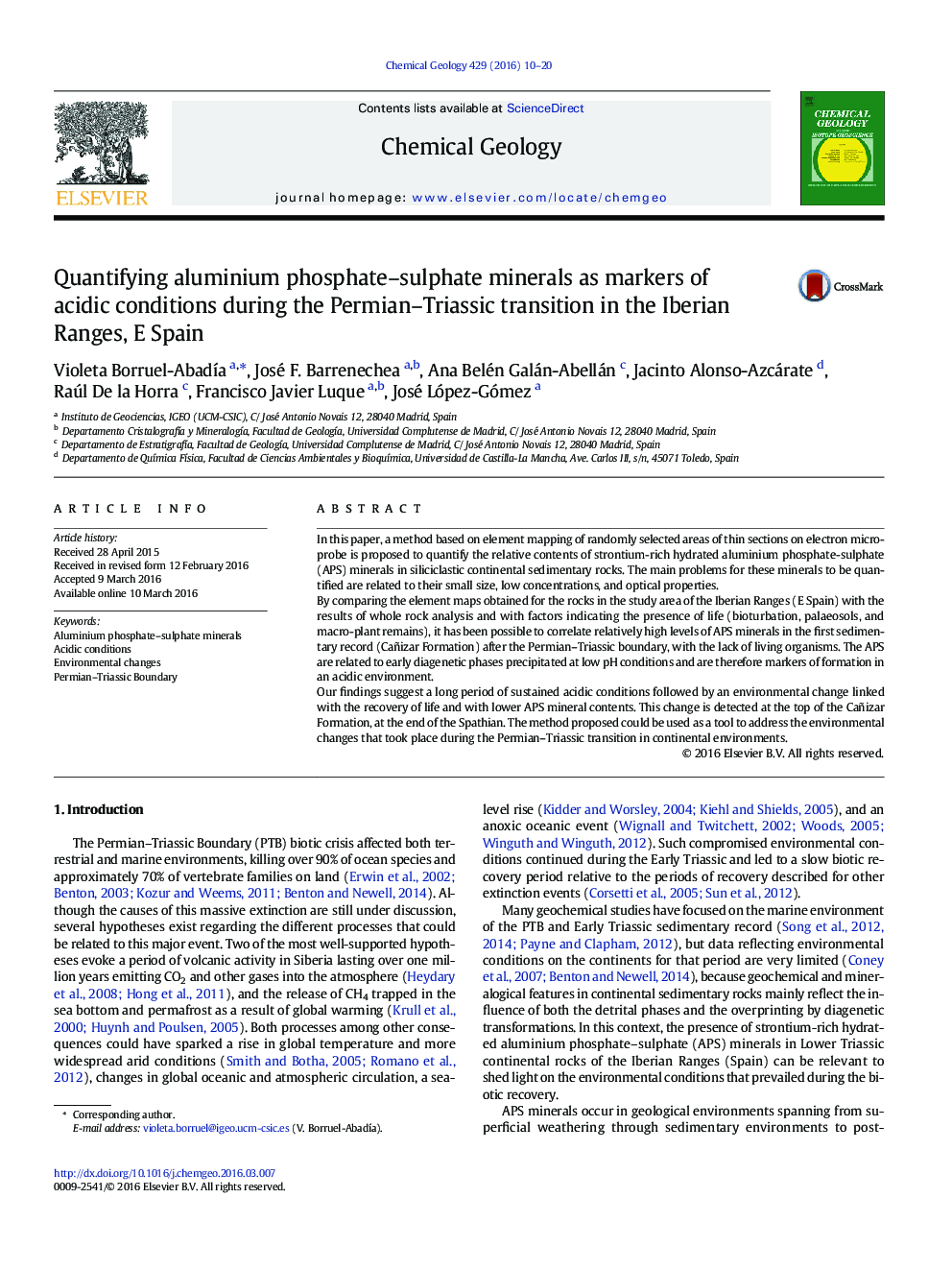| کد مقاله | کد نشریه | سال انتشار | مقاله انگلیسی | نسخه تمام متن |
|---|---|---|---|---|
| 6436102 | 1637545 | 2016 | 11 صفحه PDF | دانلود رایگان |

- APS-mineral content in the sediments as indicators of acidic conditions related to life crisis and recovery
- Variation of the concentration of APS minerals during the Permian-Triassic transition
- Quantification method of APS-minerals based on element mapping of thin section on the electron microprobe
- Comparison between the APS-mineral content, whole rock analysis and presence of bioturbation, palaeosols and plant remains
In this paper, a method based on element mapping of randomly selected areas of thin sections on electron microprobe is proposed to quantify the relative contents of strontium-rich hydrated aluminium phosphate-sulphate (APS) minerals in siliciclastic continental sedimentary rocks. The main problems for these minerals to be quantified are related to their small size, low concentrations, and optical properties.By comparing the element maps obtained for the rocks in the study area of the Iberian Ranges (E Spain) with the results of whole rock analysis and with factors indicating the presence of life (bioturbation, palaeosols, and macro-plant remains), it has been possible to correlate relatively high levels of APS minerals in the first sedimentary record (Cañizar Formation) after the Permian-Triassic boundary, with the lack of living organisms. The APS are related to early diagenetic phases precipitated at low pH conditions and are therefore markers of formation in an acidic environment.Our findings suggest a long period of sustained acidic conditions followed by an environmental change linked with the recovery of life and with lower APS mineral contents. This change is detected at the top of the Cañizar Formation, at the end of the Spathian. The method proposed could be used as a tool to address the environmental changes that took place during the Permian-Triassic transition in continental environments.
Journal: Chemical Geology - Volume 429, 1 July 2016, Pages 10-20